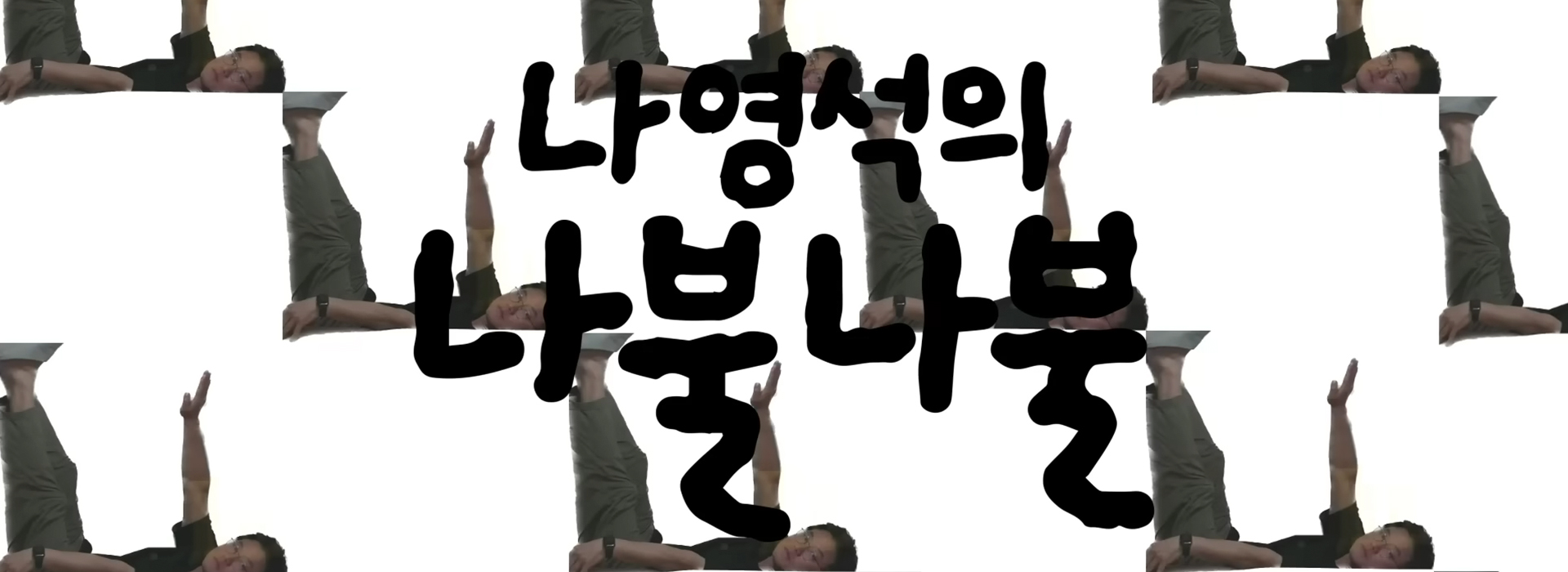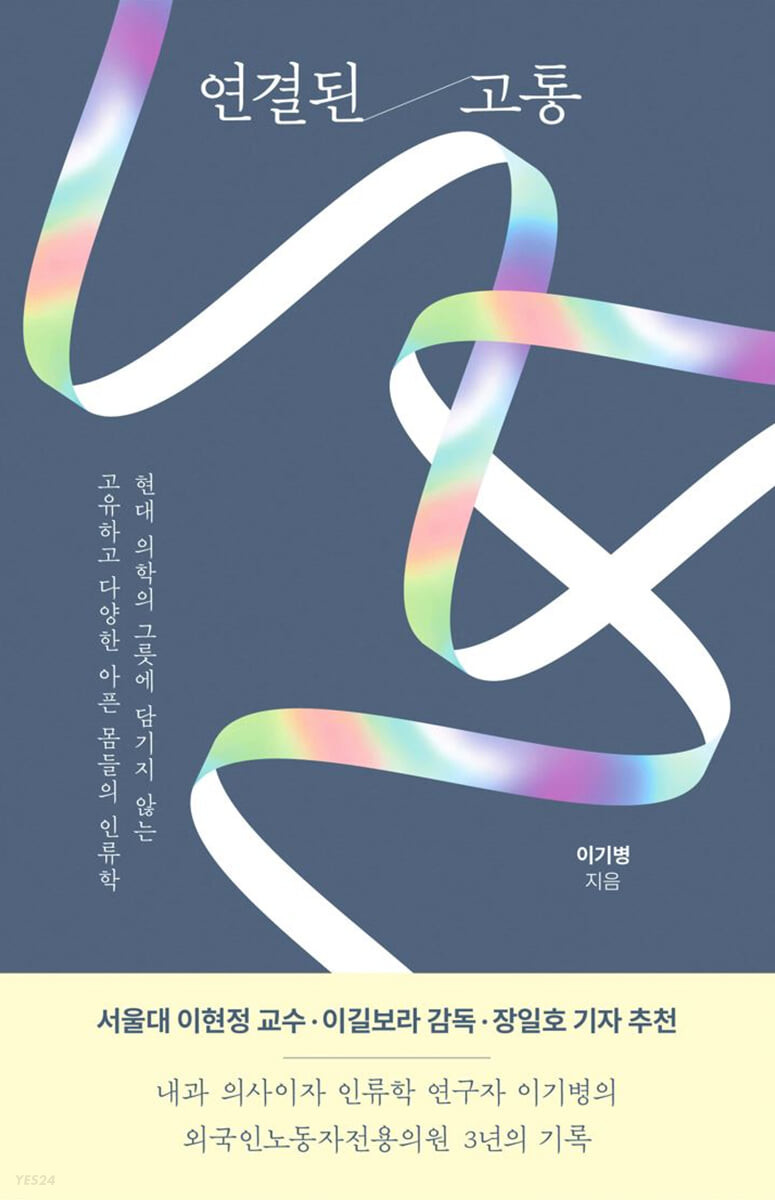
NoW
Na Youngseok’s Nabul Nabul
Show, Music, Book, and Film of the Week
2023.06.23
Credit
Article. Yoon Haein, Randy Suh (Music Writer), Kim Gyeoul (Writer), Im Sooyeon (CINE21 Reporter)
Design. Jeon Yurim
Photo Credit. Channel Fullmoon
Chatting away with a bro (Channel Fullmoon)
Yun Hae In: “There’s no need to feel bad even if you miss about five minutes of the video.” This is the key to today’s YouTube videos that Producer Na Youngseok, who produced countless hit entertainment shows, learned from consulting Calm Down Man, a webtoon artist-turned-popular-streamer. Unlike the entertainment shows in the TV era which invests a lot of manpower and capital to elaborately edit every minute and second of the show, the world of YouTube offers a bland fun that makes it okay even if you miss a few moments while doing the dishes.
Producer Na Youngseok is now applying this principle he acquired like a “corporate spy” to “Channel Fullmoon” on YouTube. 🤐Nayoung-seok’s Nabul Nabul and We’re a Staff, which is also live streamed, use only the minimum set of cameras, and there’s no directing, visual effects, or fancy editing. For example, in 🤐Nayoung-seok’s Nabul Nabul, there’s nothing more than having actor Lee Seo-jin whom he had worked closely with for quite some time in many entertainment shows, and eating and chatting with him. Lee Seo-jin calmly shares his daily habit of scrimping on electric bills, his personal philosophy (?) of matching outfits in amusement parks “out of courtesy,” his physical aging, or his personal story that are rather known to public, which contradict with his refined reputation as an actor, making people laugh unexpectedly. What lies beneath this is Producer Na Youngseok’s ability to use his close relationship with the cast to bring out stories for the episode, and the moderating tips he got from consulting Calm Down Man about Youtube. We’re a Staff is also based on the occupational traits of the cast like producers of entertainment shows or screenwriters to bring out some uniquely “hilarious but sad” anecdotes like “rumors of chaebol interns” or “rumors of abbot” that sound intriguing. Ironically, this means that both the live streaming and the edited version would guarantee the fun you won’t want to miss, not even for five minutes.
“Attitude” by fromis_9
Randy Suh (Music Writer): fromis_9’s music is a “well-made pop.” Far from being avant-garde or experimental, it reaches the essence of pop with nice melody and beautifully turns a dreary city into a scene from a film. While the lead single of their long awaited first official album Unlock My World turned out to be “#menow,” which kept their previous tones, I personally liked “Attitude,” another track on the album they showcased when making their comeback, much better. Over the past several years, every time they made a comeback, fromis_9 presented the so-called “dark” pieces of music like “Escape Room” or “Rewind” on stage. “Attitude” seems to complete their route and be an indicator of their future. CHAE YOUNG’s intense intro reminiscent of Milla Jovovich’s facial expression, SEO YEON’s pre-chorus which mixes the cold vibe with a deep groove, the chorus that calmly goes down to a minor 9th chord, and the members’ vocals all blend in a chic and stylish way. A pretty idol girl group who used to beautifully paint the everyday life of the city now gives off an aura of urban, elegant female artists at the end of the century with their song “Attitude.” No other K-pop group today could show such sentiment as convincingly as fromis_9.
Randy Suh (Music Writer): fromis_9’s music is a “well-made pop.” Far from being avant-garde or experimental, it reaches the essence of pop with nice melody and beautifully turns a dreary city into a scene from a film. While the lead single of their long awaited first official album Unlock My World turned out to be “#menow,” which kept their previous tones, I personally liked “Attitude,” another track on the album they showcased when making their comeback, much better. Over the past several years, every time they made a comeback, fromis_9 presented the so-called “dark” pieces of music like “Escape Room” or “Rewind” on stage. “Attitude” seems to complete their route and be an indicator of their future. CHAE YOUNG’s intense intro reminiscent of Milla Jovovich’s facial expression, SEO YEON’s pre-chorus which mixes the cold vibe with a deep groove, the chorus that calmly goes down to a minor 9th chord, and the members’ vocals all blend in a chic and stylish way. A pretty idol girl group who used to beautifully paint the everyday life of the city now gives off an aura of urban, elegant female artists at the end of the century with their song “Attitude.” No other K-pop group today could show such sentiment as convincingly as fromis_9.
Connected Pain by Lee Ki Byung
Kim Gyeoul (writer): Anyone who’s sick can go see the doctor. We all have the right to get treatment for our disease. This is the basic principle to live like humans. Therefore, it’s only natural that “anyone” should mean everyone, including those who aren’t “mainstream” in society. We can’t neglect their illnesses just because they’re poor or marginalized, considering their human rights and how the diseases of people living in the same country are interconnected.
Now, here’s a “hospital for foreign workers.” Lee Ki Byung, a physician, wrote about his experiences of working as a public health doctor and treating foreign workers at a free clinic in Garibong-dong. What’s interesting is that the author studies medical anthropology. The eyes of a doctor who takes care of his patient in a brief moment, and the eyes of an anthropologist who sees a person as someone under the influence of culture and society, complement each other. This book was written from those two perspectives. It’s not easy to find philosophers, anthropologists, and sociologists like Annemarie Mol, Bruno Latour, or Erving Goffman in a doctor’s writings. The author looks back on his past medical experiences and reflects on his decisions, criticizes the social context of diseases, and also reconstructs patients’ situations. Likewise, the book makes us recheck the way we see our body, disease, and the life of foreign workers.
Spider-Man: Across the Spider-Verse
Im Sooyeon (Cine21 reporter): A year after its previous series Spider-Man: Into the Spider-Verse, Miles Morales, a high school student who became Brooklyn’s friendly neighborhood Spider-Man, struggles between being a superhero and leading an ordinary life, as with all other Spider-Men. That’s when Gwen, Spider-Woman from an alternate universe, reappears before him. Miles moves to another dimension through the Spider Society, which allows Spider-People to freely travel the Multiverse, and meets the villain, the Spot, a threat to the order of the Multiverse. The Multiverse in this series is closely linked to the visuals and the theme of the movie. A world of over 280 Spider-People consists of multiple dimensions ranging from classic comic books to video games, and moving between dimensions breaks down the boundaries of popular culture, serving as a media experiment that produces sensational energy. The film also cleverly throws questions about what makes Spider-Man a Spider-Man through conflicts between Spider-People with various appearances. By far the best Spider-Man series.
Copyright © Weverse Magazine. All rights reserved.
Unauthorized reproduction and distribution prohibited.
Unauthorized reproduction and distribution prohibited.
